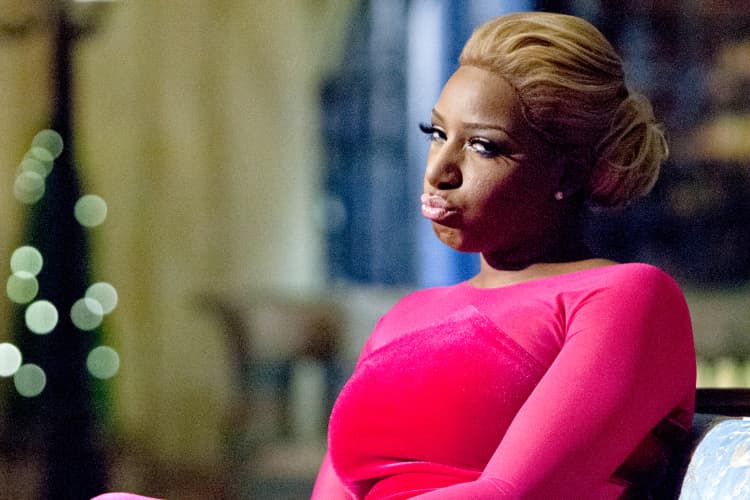The Ugly Side Of Shade Culture
Where does the desire to throw shade come from — and when did the obsession with it become a problem?

In the course of the last decade, there has been a growing interest in the term, “throw shade.” The expression — as poignantly documented in Jennie Livingston’s seminal 1990 classic, Paris Is Burning — was popularized in 2009 on RuPaul’s Drag Race, and was later buoyed on shows like The Real Housewives of Atlanta, Braxton Family Values, Married to Medicine, and Love and Hip Hop, among others. Shade, as defined in the film by Dorian Corey, is a more developed form of reading — the curve to the pitch. “To read is to insult imaginatively, in opposition to the blunt gay-bashing taunts of the straight world,” Corey said. “Reading is gay-to-gay sparring.” What’s received less attention, however, is the current and historical context from which this term was made possible. As a result, the term is often overused, misused, and normalized in ways that are disturbing and inaccurate.
Given all of this, why are we so obsessed with throwing shade? And when did it become cool to do so?
When I first invited the world into who I was, many moons ago, I learned shade as a defense mechanism — a counteractive mode of communication, a way of being, and a survival method. It was a way to engage and challenge the vapid heteronormativity surrounding me, and anyone else that threatened my livelihood. I hadn’t yet seen Paris Is Burning, or attended a drag ball, but, coming into gayness, I had learned about shade as a cultural phenomenon. It felt familiar to the kind of joking — or “joaning,” as we call it in the south — that took place on the back of school buses, in black barber shops, black hair salons, and black churches. I never fully participated in those spaces for obvious reasons, but shade was once a badge of honor that I took pride in wearing. Its armor protected me from bullying and the harsh realities of gender-based violence and body shaming throughout middle school, high school, and my early years of college. But I can’t recall it ever being a fun thing to do. I later freed myself from this armor because it began to feel toxic — it wasn’t healthy, even in instances when I used it to defend myself.
In late May, I uploaded a picture to Instagram. I was wearing a white, shoulder-less dress and a graduate cap to commemorate and celebrate the completion my Master’s program from The New School. It was an exciting moment: family members journeyed up from Atlanta to New York and were extremely proud. I looked good. I felt good. But this would all fade away days later when I received various messages asking me if I’d known that people were resharing my picture across different social media sites. Initial thoughts ranged from, “Damn, has my picture landed on The Shade Room” to “Why can’t people just let me live?” Though the photo never appeared on TSR — the gossip site that regularly posts side-eye-inducing stories about black people — it did materialize as both a topic of discussion and a source of comedy on Twitter and Facebook timelines. The most popular one, among them, compared me to a gallon of milk; others were extremely bigoted and hate-filled. I laughed at some — because I love, can take, and can dish out a good joke — but others made me consider retreating to a place where my response was either shade or a clapback. A clapback, as defined by writer C. Imani Williams, is “the ability to check a person with deft precision, whether it’s in person, through text, or via social media.” It’s similar to shade, think of it as a first cousin, as they are both comparable response tools. That urge of wanting to react in a very specific way, though, led me to question our real desires when throwing shade.
The consequences, of course, range from shade now being a source of comedy and entertainment to it creating a culture of lovelessness, insecurity, and violence.
I ask these questions not to shame and problematize those who find enjoyment in throwing shade, but rather to interrogate the source of this pleasure. In a Huffington Post blog from 2013, titled “Tongues Untied: Shade Culture — Throwing Shade, Reflecting Light,” Wade Davis wrote: “What breaks my heart is that shade seems to come easier than love for some. I realized that many of our young people use shade to engage each other because many of them have been kept at a distance by people in their own lives. I found most of their shade performative, meaning they were just doing it to gain favor or the attention of another, and it had very little to do with intentionally wanting to hurt the person being shaded.” Wade’s concern mirrors my own. I wonder how this has contributed to how we consume and create media, how we communicate with each other, and how the over-saturation of shade in mainstream television has killed the subtlety, subversion, and performativity of shade that emanated from the ballroom scene.
For example, I walk runway — one of the shadiest categories you’ll encounter at a ball. Runway, a term for the space onto which the main attraction at a ball occurs, and the category based on traditional fashion runway modeling, requires attitude, charisma, grace, control, creativity, and shade. The judges look for how well you can sell a garment, how clean and personable your walk is, how unbothered your attitude is, and how well you can shade your opponent in battle. It’s important to note how performative shade is. Opponents shade each other fiercely on the runway but when the ball is over, they leave these attitudes on the floor. Or, at least that’s the expectation. Sometimes shade carries over and festers into irrepressible conflict. But this is not only a matter of shade, it’s often a matter of bad sportsmanship. Which is to say: shade can be playful, witty, and performative but it also has consequences.
The consequences, of course, range from shade now being a source of comedy and entertainment to it creating a culture of lovelessness, insecurity, and violence. On one hand, networks like Bravo and LogoTV thrive off this result, never having to deal with its material and immaterial effects. On the other, there is often an expectation that shade must be served because it’s in vogue. We should remember that shade is performative but also born out of resistance, struggle, and oppression. For some, the use of shade and comedy make transphobia, fatphobia, misogyny, and homophobia appear sexy and seducing. These tools are a means to escape whatever one’s reality may be — it’s why people love quoting NeNe or Phaedra from The Real Housewives of Atlanta or invoking the spirit of K. Michelle so much. The laugh is pleasurable. But ultimately, that’s the most disturbing part: when you want to openly taunt a person — their failures, their flaws, their beauty which is perceived as a kind of otherness — even as you realize how harmful it will be.




